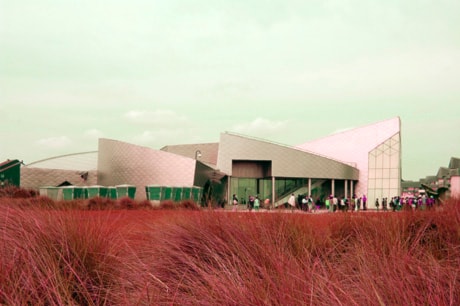JUNO BEACH, France — June 6’s 65th anniversary of D-Day on the beaches of northern France will pack some extra poignancy this year.
“Every five years a bigger D-Day Festival is organized, so the 65th will be special,” says Fabienne de Chassey-Schurgers of Normandy Tourism.
“But it will also probably be the last one we will see any veterans at. Most vets are already at least 85 years old and likely won’t be around or won’t be able to travel to the 70th anniversary festival in 2014.”
It’s with such historic significance in mind that communities along the D-Day landing beaches are planning 65th anniversary festivals June 5-7.
While every year fewer and fewer Canadian, British and American war vets are at the party, the French want to keep marking the date in a grand way.
As such the goings-on attract tourists of all ages.
Celebrations this year will also get some star power with globally popular U.S. President Barrack Obama scheduled to visit and tour as a guest of French President Nicolas Sarkozy.
For the people of France it’s a holiday appropriate for members of the whole family.
Fireworks, parades, recreations of military camps, picnics and pub nights will all celebrate the liberation of France.
The D-Day landings on Normandy’s beaches — code-named Juno, Omaha, Utah, Gold and Sword — are considered the most complex military operation ever orchestrated.
In all, 135,000 Allied soldiers landed and parachuted onto the beaches the morning of June 6, 1944, and led the charge to wrestle France from Nazi occupation and eventually win the Second World War.
Our tour group visited Normandy for D-Day last year.
While it was the lesser celebrated 64th anniversary, our trip can still be used as a reference for what’s in store for the milestone 65th anniversary this year.
The mood of jubilation is omnipresent in Normandy in early June.
Everywhere a French flag flies, there is also a Canadian, American and British flag waving in honour of their liberators.
Generally, a trip to Normandy makes you feel proud to be a Canadian.
At age 44, I’m two generations removed from the war.
But my grandfather James MacNaull, who passed away in 1980, drove a tank in the war and I couldn’t help but wonder what he went through during those times. He did roll into France, but after D-Day, to head to Holland and help with the liberations there.
I remember as a boy my grandfather didn’t really want to talk about his experiences “over there,” preferring to show me and my siblings how he made a bed drum tight in the military or shined his shoes daily.
The night of June 5 is the traditional time to have cliff-top fireworks at Longues-sur-Mer near Juno Beach, where the Canadians arrived, and Gold Beach, where the British arrived, on D-Day.
The show starts at a German bunker with the sounds of battle, morphs into fireworks set to big band hits of 1944 and builds to a crescendo of pyrotechnics, music and sound effects symbolizing the liberation of France and the turning point that allowed the Allied to win the war.
The anniversary of D-Day is the time to check out the recreation of a military camp and the afternoon parade in Bayeux, the first French city liberated by Allied troops.
In the nearby little coastal town of Courseulles-sur-Mer is Juno Beach, where 14,000 soldiers in the 3rd Canadian Infantry Division and the 2nd Canadian Armoured Brigade landed early in the morning June 6, 1944.
The beach was a bloody scene that day with 359 Canadians killed and more than 700 injured.
Today it is an eight-kilometre long stretch of peaceful sand, dune grasses and water.
A walk along the beach and checking out the remaining German bunkers are part of a tour offered by the Juno Beach Centre.
The centre opened on D-Day in 2003 and is Canada’s only museum in Europe.
While the centre’s focus is naturally the role of Canadians on D-Day it also celebrates all things Canuck.
For instance, thousands of French schoolchildren tour the facility every year to take in contemporary displays on our country’s multiculturalism and our prowess at sports like hockey and curling.
The gift shop, of course, sells maple syrup products along with D-Day and Canadiana souvenirs.
The Juno Beach Centre get about 58,000 visitors a year — 40 per cent Canadian, 40 per cent French and the rest a smattering of nationalities led by the British and the U.S.
“Many of the Canadians are doing some sort of pilgrimage with either their father or grandfather who fought in the war or the memory of their father or grandfather who fought in the war,” explains the centre’s program manager Marie-Josee Lafond.
As time marches on and vets die of old age, general manager Nathalie Worthington said it’s important to keep the centre relevant.
“Vets will always be greeted and treated as VIPs when they visit,” she stressed.
“But we also have to present history in a way that engages younger generations.”
The Canadian Cemetery in nearby Beny-sur-Mer is where 2,048 soldiers rest.
The graveyard has been customized with specially planted maple trees and perfect rows of headstones, each with a little garden surrounding them.
In the area there are also British, American, French, Polish and German cemeteries.
The Caen Memorial: A Museum for Peace is a huge complex in the capital of Lower Normandy.
A fighter jet hangs in its 18-metre airy main entrance and the vast exhibit space follows the Second World War’s timeline.
While the museum is predominately about the Second World War, it also chronicles the Cold War and last year had the first European showing of the September 11 Memorial, on loan from the New York State Museum.
The Pays de Bessin tour boat — which proudly flies the Canadian, British and American flags — leaves daily from the Port-en-Bessin to cruise past the Omaha landing beach along with D-Day history commentary.
